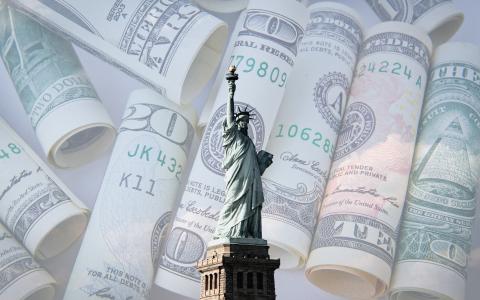
Rate Hike Pause: Insights from Morgan Stanley's Ellen Zentner on U.S. Monetary Policy and Economic Climate
Ellen Zentner, Morgan Stanley's Chief U.S. Economist, firmly believes that the Federal Reserve's cycle of rate hikes aimed at curbing inflation has reached a standstill, although possibilities for future action remain open-ended.
Zentner appeared on a Bloomberg podcast to discuss the Fed's recent move to keep the federal funds rate static, as well as her predictions for U.S. monetary policy and economic trends in the foreseeable future. Given the waning inflationary pressures, she expects the central bank to hold off on rate adjustments until they are prepared to implement cuts next year.
With a looming potential government shutdown orchestrated by Republican leaders, Zentner pointed out the subsequent data deficiencies that could hinder the Fed's decision-making capabilities, thereby strengthening the argument for maintaining current rates during the upcoming November meeting.
Q: Can you elaborate on the implications of a potential government shutdown?
A: When it comes to monetary policy, uncertainty generally leads to a freeze in policy actions. The scope of a government shutdown becomes crucial here.
A partial shutdown, for example, would allow certain agencies to remain operational, thereby enabling the collection of specific economic indicators like payroll data. However, a full-scale government shutdown would lead to a complete lack of government-provided economic data, complicating the Fed’s ability to make informed decisions on rate adjustments. The absence of critical data clouds the Fed’s vision, creating a ripple effect on the economy.
Our analysis suggests that each week of a full shutdown could reduce GDP growth by approximately 0.2 percentage points.
While prior shutdowns have proven to be somewhat temporary setbacks in economic performance, there are enduring consequences, such as lost revenue for local businesses. Nonetheless, these shutdowns typically end up being more of a hiccup in the larger economic landscape as furloughed workers usually receive back pay.
Q: What conditions would prompt the Fed to consider another rate hike this year? And are rate cuts on your radar for March?
A: Two factors must converge for another rate hike to be on the table this year. Firstly, the Fed needs to be satisfied with the observed increase in labor market slack and the deceleration in job gains.
Secondly, a notable rebound in core services' inflation rates could trigger another hike. My forecast, based on incoming data, indicates that it’s highly unlikely we'll see a rate hike in November. However, there's always December to think about.
Regarding rate cuts, we anticipate a commencement in March 2024 at a quarterly pace of 25 basis points. The Fed's own projections also suggest two cuts next year. Our models assume a continued decline in inflation, which keeps real interest rates highly restrictive, differing from the Fed’s outlook that expects real rates to climb.
This inconsistency questions the Fed’s aim for a soft economic landing, raising concerns about the coherence of a committee-based forecast.



